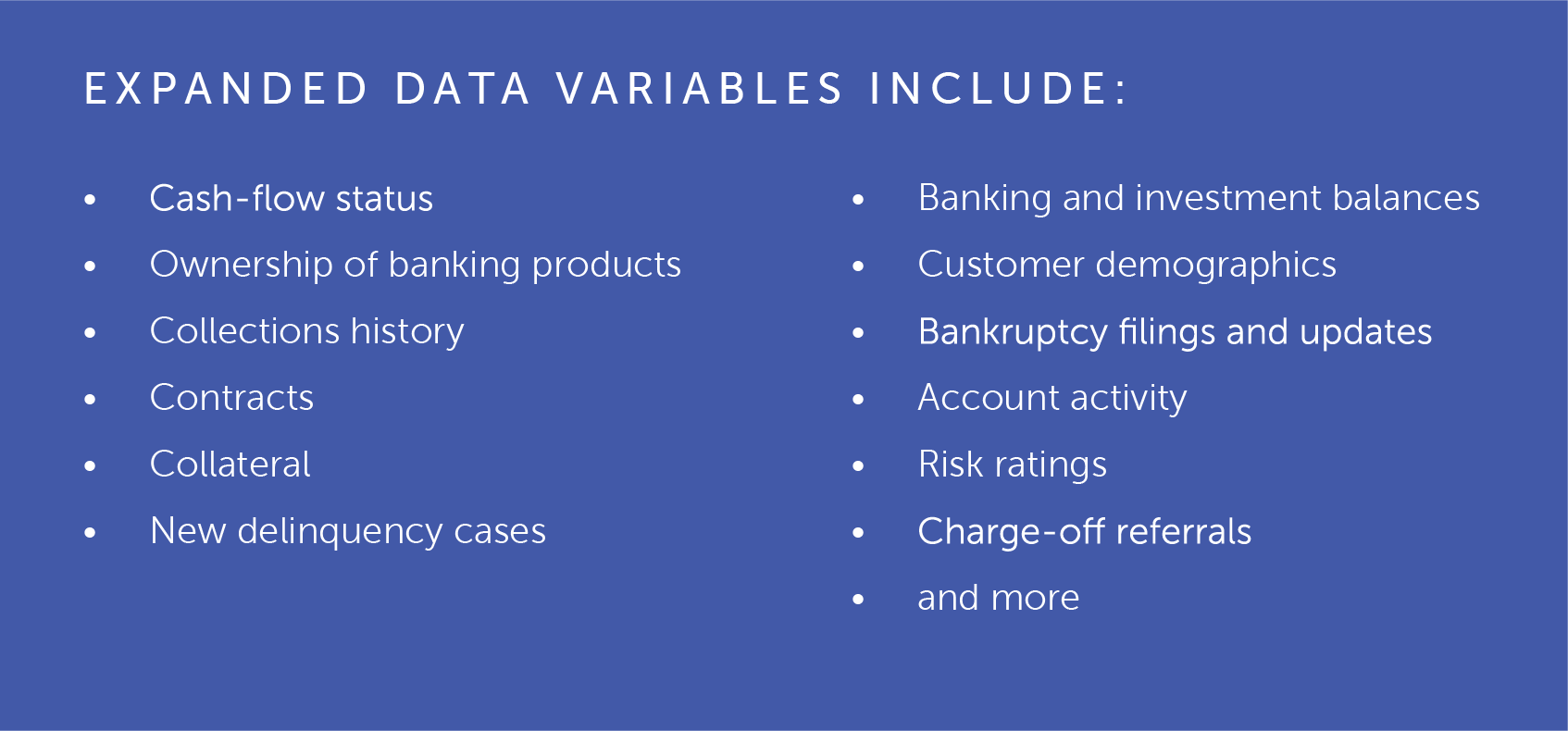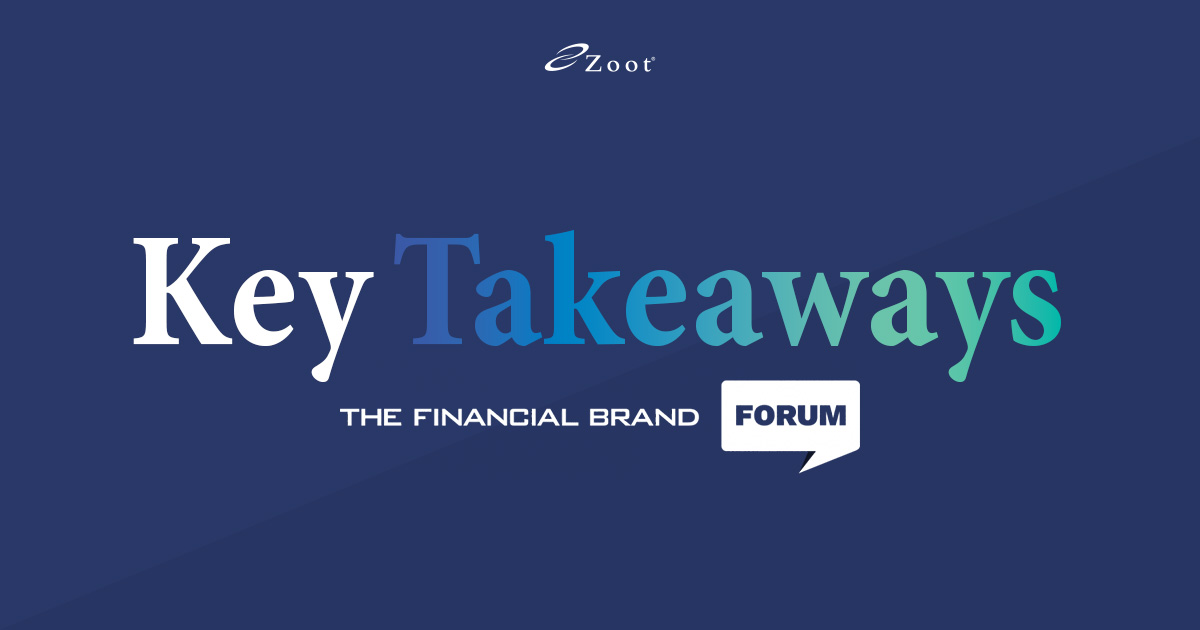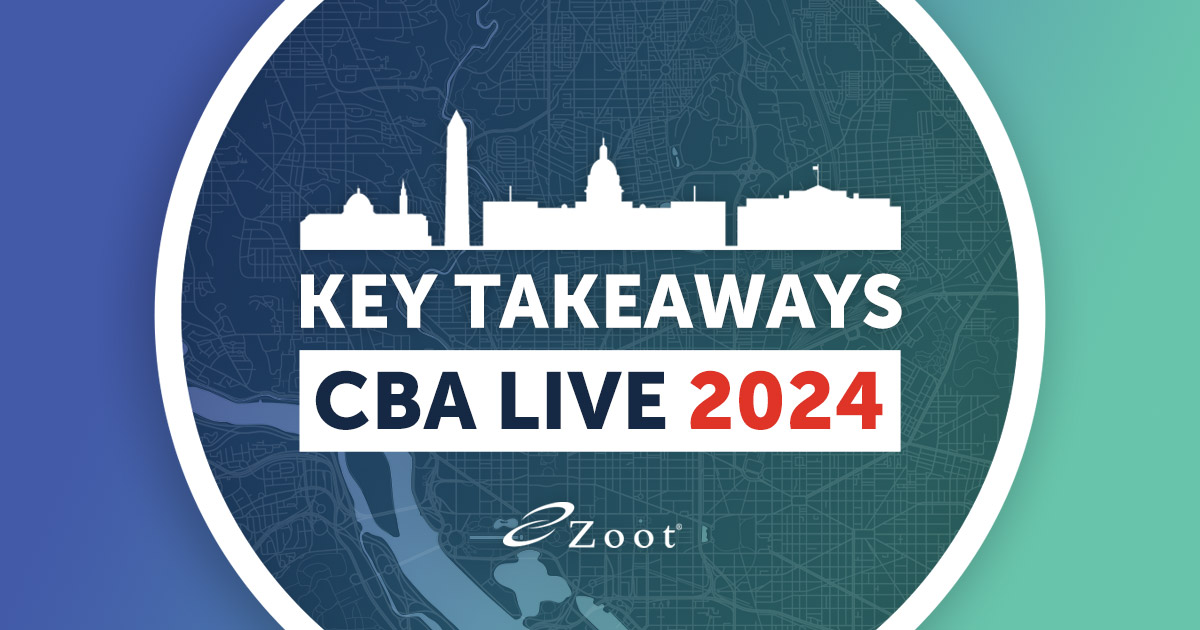Returning to a New Normal
As Americans navigate the path to a new normal, the financial landscape is changing.
The return of day-to-day expenses, payments for mid-pandemic purchases (when cash was flush), and the sun-setting of pandemic-related programs have all slowed cash accumulation5.
In May 2022, the excess savings seen at the end of 2021 dipped to $2.5T6. Russia’s invasion of Ukraine resulted in a steep increase in food and energy prices, taking a serious toll on consumer spending. Inflation reached a 40-year high, and the threat of a recession took center stage – eliciting interest rate hikes from the Fed7.
Reaching record highs, the change rates in monthly household spending* and expected year-ahead growth** in everyday essential spending increased in April 20228.
“…while household balance sheets overall appear to be in a strong position, we are seeing rising delinquencies among subprime and low-income borrowers with rates approaching pre-pandemic levels 9.”
Joelle Scally, Administrator
NY Fed Center for Microeconomic Data
The Shift in Delinquencies
The modest delinquency rates of the recent past appear to be coming to an end. Charge-off rates remain at historical lows, but falling since 2010, they recently plateaued and in mid-2022 showed a hint of an increase.
The credit card delinquency rate has increased quarter-over-quarter, reaching 1.73% in Q1 2022 from its historic low of 1.48% in Q2 202110.
Foreclosures are shifting towards more typical levels. In Q2 2022, there was a 45% quarter-over-quarter jump, with roughly 35K people seeing new foreclosures on their credit reports11.
Auto loan delinquencies are also on the rise. Both prime and subprime repossessions have nearly doubled since 2020. Lenders extended many loans to buyers with temporary pops in income during the pandemic but whose monthly incomes fell as stimulus programs ended12. While origination dates of delinquent auto loans are typically spread out over several years, most of the current repossession inventory stems from loans booked during the pandemic13.
In late March 2022, 2.7% of outstanding debt was in some stage of delinquency, and of the $431B delinquent debt, $299B was seriously delinquent14***.
Blueprint for the Future
As FIs prepare for what’s to come in consumer lending and debt, an important reality is to keep in mind: Your target customer has changed. Consumer motivation for, ability to acquire, and feasibility of keeping up with payments for most types of loans is very different today than it was a year ago. And that customer’s profile changes again when they start missing payments due to financial stressors15.
[WHITEPAPER] Collections & Debt Recovery: Tactics in the New Normal
Collections Management
To ensure loan portfolios remain healthy, lenders are preparing for defaults by making strategic investments to weather an impending collections storm. Financial institutions streamlining the collections process can minimize institutional losses from non-performing accounts.
To maximize debt recovery, FIs can leverage comprehensive data to power account segmentation – optimizing targeted intervention. FIs can enrich limited or incomplete internal information for precise modeling by incorporating expanded data from external providers with existing internal account data.
With Zoot, FIs deploy advanced analytics to evaluate repayment and collectability probability factors. Using established risk parameters to test challenger strategies for portfolio profile segmentation identifies markers for high-risk accounts, streamlining the collections and recovery workflow.

A scalable, configurable platform helps automate the collections management process. FIs can deploy the solution inside an existing collections workflow ecosystem to ensure comprehensive information that impacts workflow is accessible in all areas in the collections environment.
Zoot’s account management solution helps FIs boost operational efficiencies – improving the bottom line. It offers users the flexibility and control to transmit data to and from other platforms – helping to manage risk, deploy automation, adapt to changing compliance and regulatory constraints, and more.
*highest reading since tracking began in December 2014
**The median expected growth in nonessential spending remained unchanged at 2.5%
***includes some debts that have been removed from lenders’ books but upon which they continue to attempt collection
Sources
- Picchi, Aimee (2022, June 15). Car repossessions are surging – a troubling sign for the used car market. www.cbsnews.com: CBS News. https://www.cbsnews.com/news/used-car-bubble-market-repossessions-are-surging/
- ANALYSIS BASED ON NEW YORK FED CONSUMER CREDIT PANEL/EQUIFAX DATA QUARTERLY REPORT ON HOUSEHOLD DEBT AND CREDIT FEDERAL RESERVE BANK of NEW YORK. (2022). In New York Federal Reserve. Federal Reserve Bank of New York Research and Statistics Group. https://www.newyorkfed.org/medialibrary/interactives/householdcredit/data/pdf/HHDC_2022Q1
- ibid
- Cerullo, M. (2022, July 5). Americans are eating into their pandemic savings to handle inflation. www.cbsnews.com; CBS News. https://www.cbsnews.com/news/americans-eating-into-pandemic-savings-to-handle-inflation/
- Leonhardt, M. (2020, September 29). 64% of Americans changed their spending habits during the pandemic—here’s how. CNBC.com; CNBC. https://www.cnbc.com/2020/09/29/americans-have-changed-their-spending-habits-during-the-pandemic-heres-how.html
- Cerullo, M. (2022, July 5). Americans are eating into their pandemic savings to handle inflation. www.cbsnews.com; CBS News. https://www.cbsnews.com/news/americans-eating-into-pandemic-savings-to-handle-inflation/
- Lane, S. (2022, June 30). Consumer spending fell in May as food, fuel prices stoked inflation. thehill.com; The Hill. https://thehill.com/policy/finance/3542426-consumer-spending-fell-in-may-as-food-fuel-prices-stoked-inflation/
- Ponciano, J. (2022, August 2). American Household Debt Hits Record $16.2 Trillion As Mortgages, Credit Card Spending Swell—Delinquencies Creep Up. Forbes.com; Forbes. https://www.forbes.com/sites/jonathanponciano/2022/08/02/american-household-debt-hits-record-162-trillion-as-mortgages-credit-card-spending-swell-delinquencies-creep-up/
- Peiser, J. (2022, August 2). Credit card debt surges as inflation pushes Americans to borrow more. Washington Post. https://www.washingtonpost.com/business/2022/08/02/credit-card-debt-inflation/
- Riley, B. (2022, August 12). Brewing Credit Card Delinquency: Watch for Increases. Payments Journal; Mercator. Retrieved August 12, 2022, from https://www.paymentsjournal.com/brewing-credit-card-delinquency-watch-for-increases/
- Wolfson, A. (2022, July 30). “Dramatic increase.” Foreclosure filings are up more than 150%. Here’s what that tells us about the housing market. MarketWatch; Dow Jones. https://www.marketwatch.com/picks/dramatic-increase-foreclosure-filings-are-up-more-than-150-heres-what-that-tells-us-about-the-housing-market-01659181360
- Albahary, S. (2022, July 13). The Wait Is Over – The World of Hurt for Auto Lenders Is Here. perficient.com; Perficient. https://blogs.perficient.com/2022/07/13/the-wait-is-over-the-world-of-hurt-for-auto-lenders-is-here/
- ibid
- ANALYSIS BASED ON NEW YORK FED CONSUMER CREDIT PANEL/EQUIFAX DATA QUARTERL Y REPORT ON HOUSEHOLD DEBT AND CREDIT FEDERAL RESERVE BANK of NEW YORK. (2022b). In NewYorkFed.org. Federal Reserve Bank of New York Research and Statistics Group. https://www.newyorkfed.org/medialibrary/interactives/householdcredit/data/pdf/HHDC_2022Q2
- Samet, C. (2022, July 5). Q2 Industry Insights: TL;DR – Prepare Now for Delinquencies Tomorrow. trueaccord.com; True Accord. https://blog.trueaccord.com/2022/07/q2-industry-insights-tldr-prepare-now-for-delinquencies-tomorrow/





